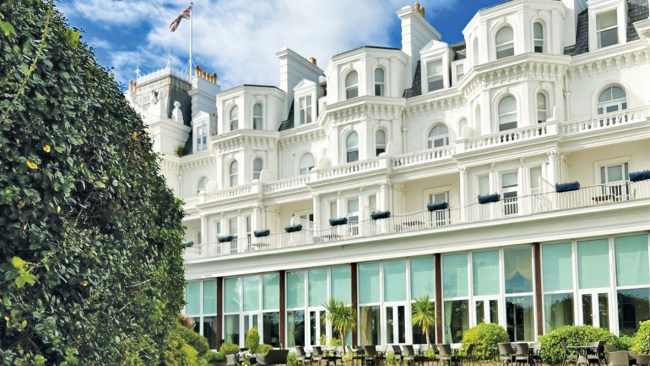Matt Preston: These oysters are worth ditching a honeymoon flight for
Some people travel to view famous monuments, but for others oysters are the main attraction - and, in Matt Preston's opinion - they're absolutely worth altering travel plans for.

Lifestyle
Don't miss out on the headlines from Lifestyle. Followed categories will be added to My News.
I'm an oyster tragic married to another oyster tragic. We’re the sort of couple who, in San Francisco, talked their way off the flight home from their European honeymoon because a fellow traveller boasted that the oysters in Marin County, north of the city, were some of the best in the world.
We hired a car and drove up the coast, past fog-shrouded headlands where sea lions hunted in the foam to the evocatively named Hog Island. Here on the back deck of rickety waterside oyster shacks the small, sweet local oysters were grilling, and dozens were sold unshucked with the offer of a dishcloth and a screwdriver for DIY opening.
At our favourite place we sat among the industrial detritus of two generations of oyster hustlers, perched on wooden cable spools that served as tables, eating dozen after briny dozen. Our view, the cold, calm waters from whence they’d come.
Most were Pacific rock oysters, but the smaller ones were the prized tiger-paw-shaped Kumamoto oysters that have a delicious, almost metallic meatiness underpinning a maritime sweetness.
The cooler, clean waters of northern California are a boon for oysters and none more so than those of Morro Bay. When it rains around here these unique oysters, along with a lean salinity, taste of cantaloupe – not a mild hint of the sweet orange melon but a proper whack of flavour that recalls eating melon and prosciutto in Italy, with the oyster bringing the salt. It’s shocking in a shockingly good kind of way.
Ever since those first Hog Island days of our marriage, oysters have been a key reason for travelling. Some want to visit the world’s best cathedrals or footballs stadiums; we go in search of bivalves. We once, for instance, stayed in a cheap hotel in Paris’s 7th arrondissement because it was above an oyster seller who shucked the best from France’s Atlantic coast to order, the outside of the café banked with ice-filled stalls loaded with glistening uncracked shells.
This year alone I’ve eaten oyster omelettes in Taipei (small but good) and rather suspect oysters in Sri Lanka (soft and ooky; I never want to see them again). I’ve cruised the food haven that is London’s Borough Market where traders specialise in oysters from France (like native Belons and fine de claires) and Ireland (Rossmore and Galway natives), those from the Helford River in Cornwall or the Colchester oysters cultivated on leases down the Thames by Mersea Island in Essex and sold by the same family since 1769.
Oysters were once the luxury of the poor. The rivers surrounding the emerging city of New York and the Essex inlets outside London were full of oyster beds that fed the cities from cheap stalls that evolved into disreputable oyster bars run by criminal gangs. It was here that cocktail sauce was born.
Back in its heyday, the dredging fleet of the Kent estuary was so famous their oysters were lauded by Samuel Pepys and Charles Dickens, and earned the sleepy town of Whitstable the title of Oysteropolis. The little port is still home to oyster fishermen and their now mechanised fishing boats but more often than not the oysters coming from the lease here are farmed rock oysters.
Sit in the little oyster shack owned by the Green brothers who have played a large part in the revival of Whitstable’s oyster fortunes and you can see their beds in the water across a beach that’s little more than a slope of pebbles. You’re behind the sea wall, erected after the terrible flood of 1953 which destroyed many of the original oyster beds. It was here that my middle son – now an assured lover of a sneaky dozen – struggled with one of his first oysters, eyes watering as the strangely unnatural act of swallowing a live bivalve defeated him.
I lived in Whitstable when it was still a small town but with more than 70 pubs, a testament to a workforce of fishermen and coastal seafarers. Now it’s lauded by the demi-monde as the perfect place for weekends and balmy dusks on the beach, for too many summer Proseccos, and afternoons trawling for “lovely things” from chichi shops. You can even stay in old fishermen’s cottages and oyster warehouses turned into holiday rentals that have boosted Whitstable’s revival.
Unchanged from my time here decades ago, however, is the original Wheelers Oyster Bar that first opened in 1856. Bookings are advised as there’s only the tiny original parlour and a few tables out back where you can feast on baps overfilled with local crab meat and rock oysters fresh off the lease. The oysters here are clean, briny and shimmer with a brilliant freshness, having been shucked to order.
The most highly prized oysters here are the wild-harvested natives that come into season at the start of September but on my last visit were nowhere to be found. I was bemoaning this when a man with the most weathered hands I’ve ever seen drifted past our table into the kitchen. And, oh joy, those hands were holding a coffin-shaped box made of the thinnest plywood that held those lauded natives.
The Romans harvested these oysters, which have been granted PGI (Protected Geographical Indication) status for having been grown only in Whitstable Bay. I was happily seated with a dozen, some as big as my palm. They were meaty and chewy, briny and fresh but with a metallic zincy edge – everything an oyster aficionado could wish for. And I suppose it’s another of those great travel truths – that to have these unique experiences that speak to you and open your heart, the willingness to follow a tip and an enthusiasm for everything on offer is the best way to attract them.
Originally published as Matt Preston: These oysters are worth ditching a honeymoon flight for





